Note
Reblogging this one too
Hi, based on my quick research and a bit of personal experience
Indigenous people usually name their children based on physical characteristics, notable events, nature around them, etc (some of them may have multiple names, as they may get a new name after they grow up). One example I can give is a name that means "rainy day" that may be given to a child who was born in a rainy day, or to an adult that notably enjoys rainy days.
The child may be named after a notable family member, but, as far as my experience goes, naming a child after a god might even be disrespectful to some indigenous cultures. Some may give names with meanings like "follower of (god name)" or "blessed by (god name)", but I don't think I've ever seen anyone with directly the same name as a god
This is very helpful, thank you. I appreciate you reaching out!
As I’ve been going down this rabbit hole, I have noticed a lot of names are of the same vein, being the rough translation of a words that have something to do with the gods but not explicitly their name (ex. One of the origins of Jean {the name Jean has multiple sources}, from what I’ve found, is a word that translate to “god is gracious”).
It’s interesting hearing other people’s input, as I’m learning new things as well as having more context for some talking points from my post.
Again, thank you Anon!
1 note
·
View note
Note
Reblogging this one too
Hi, I just saw your post about Hoyo's colorism, and I'd like to bring something to the table that I've been thinking about recently, but can't be sure about whether or not it's a thing or if it's in my head
Sumeru and Natlan, for some reason, have many names that are taken from important historical figures (Al Tighnari, Ibn Al Haitham, Dihya, Kandake Amanirenas) and gods (Anahita, Sethos, Chasca, Kinich, Mahuika, Olorun, Xilonen, Iansan)
And I might be wrong, but I don't think any other nation does that, at least not to this extent??? (Except for Fontaine with Wriothesley and Neuvillette (Neville), but again: not the extent Sumeru and Natlan do it)
I don’t think this is in your head Anon.
From what I do remember, some of the names from the Mondstadt cast are translations of Latin words (ex. Diluc coming from the word “diluculum” which roughly translates to “dawn” or “twilight”, hence Diluc’s in-game skills.), and the Liyue cast names being combinations of certain words (ex. Xinyan which uses the characters 辛焱, which roughly means 辛 (xīn) "spicy" 焱 (yàn) “flame"). I don’t recall if anyone else is named after gods or a specific pantheon.
I’ll probably do a bit more research on the other names to make sure and to see if I find anything else but this is something I don’t think people have realized. I might even make an edit to the post to include this information as well because it is a big deal.
Thank you Anon. 🙏🏾
21 notes
·
View notes
Text
I'd like to add to this too
Years ago I made a thread on Twitter about the hilichurl issue
Even if you disconsider the entire inspirations you listed, you are left with: Human looking creatures that have an entire developed language, social structures, a developed cultures, their own architecture, but are different from the other people living in the same planet. They can't understand each other, therefore, the people deem them "savages", as if they're doing things on pure instinct. As if they don't think. As if they're animals.
Hilichurls and "Tribal" Portrayals.
While we're talking about Natlan, I also want to mention how awful it is that a section of the fandom tried to make us all out to be crazy years ago for pointing out how racist the portrayal of the Hilichurls are.
Quick content warning for mentions of slavery, colonization, genocide, and anti-Indigenous racism. (Image description is in alt text)
Hoyo used Indigenous people as references for these in-game enemies, which we literally have video proof of, provided by the company itself (Timestamp: 1:30).
The Hilichurls were constantly belittled by Teyvat's people, with an Inazuma npc likening them to demons. I remember Paimon acting like the items they collected were meaningless or pieces of junk during the earlier parts of the game.
They become a lot more sympathetic later due to their actual origins in-game (which I'm sure @phoenix-creates can confirm for me because I know you're farther ahead in Genshin than I am right now), sure, but I always found it strange that Hoyo used Indigenous cultures to portray these "monsters" who have lost their sense of selves (meanwhile their human forms are white), as if to imply that Indigenous cultures are more "wild" or "savage."
Genshin fans of color, since 2020, have pointed out the racist undertones that Teyvat's people were perpetuating against the Hilichurls due to them acting the same way that racists irl act towards non-White cultures, but they were told that they were overreacting and this was swept under the rug as a result. The very next year, it's brought up again with more people finding out about it, and we were still being told that we're overreacting.
So now that we're at Natlan, is it seriously that hard to believe that Hoyo straight up just doesn't respect Indigenous cultures? Black (and many brown) cultures too, because it's very telling that Iansan, the Natlan character with the darkest skin so far, is given a more stereotypically "tribal" look on her design with a bunch of bones used as her accessories despite that not being what her actual inspiration looks like.


(Artist for picture on the right: vieirapx on Instagram)
Sucrose has confirmed in her "Something to Share" voiceline that she collects Hilichurl bones, which is similar to colonizers taking the bones of dead Indigenous people with this added context.
Also, please read or reread the Teyvat Travel Guide Vol. 1. Alice basically confirms that she wants to enslave the Hilichurls for labor and also feed the weaker ones to the stronger ones.
That latter point is cannibalism. I know that many people are fans of Alice, but a lot of what she talks about in the first guide is why I don't like her.
Yes, it can be argued that Indigenous cultures are not the only inspiration for the Hilichurls, as it's been said that they may take inspiration from goblins, Bokoblins from the Zelda franchise, and the Amanojuku from Japanese mythology. Answer me this question, though.
Why is Hoyo capable of referencing a creature and not a human being when it comes to the Japanese inspiration for the Hilichurls, but this does not apply to the Indigenous references? It's dehumanizing, and it feels like another double-standard that needs to be addressed.
Hoyo has casually made black and brown cultures in Genshin appear to be less civilized and more "tribal" compared to our White and East Asian peers, both with the human characters and the non-human ones. Sumeru's quests and enemy npcs had multiple examples of this, with the Traveler and Jeht even destroying almost the entire Tanit tribe with the narrative justification being that, conveniently, most or all of them were selfish, bloodthirsty, and manipulative (Jeht's profile on the wiki page goes into what happened with more depth). They had to die because the tribe was dangerous - even though the main problem seems to be Babel - and Jeht's white, blonde companion needed to help save everyone from these evil, power-hungry savages.
(Sidenote: I think this is the second time overall that Hoyo has come up with an excuse to justify Traveler committing genocide on an entire group of people, with the first being the Iwakura Clan.)
I'm sure that the same thing is going to happen with Natlan's quests and npcs because Hoyo has always been weird about the portrayal of black and brown-inspired characters. The question is not whether any of the creatures or humans from specific groups are bad, suspicious, or designed to fit a specific image. We know the answer to that. The real question is why they are portrayed like this, and why it keeps happening more commonly to the black and brown cast members compared to our lighter peers.
#Genshin#Boycott Hoyoverse#Hilichurls#I'm probably gonna do a bigger post on hilichurl's culture based JUST on what we have inside the game
108 notes
·
View notes
Text
Take a while to read this please, OP worded this very clearly
Please boycott hoyoverse and speak up about the problems in their games. Don't forget to sign the petition too (people intend to use it to contact cultural ambassadors, since the misuse and misrepresentation of cultures can be a crime)
Genshin Impact, Both the Game and the Community, Cannot Hide Their Colorism or Racism Anymore
This is going to be a long read. I refuse to stay silent.
I've played Genshin Impact on and off since 2021 when I was first introduced to it. I drew fanart but rarely participated in the fandom, as Genshin has one of the most toxic and racist fandoms that takes pleasure in driving off content creators of color, perpetuating racism within the communities, as well as harassing and threatening people who dare try to speak out about it. But, for as racist as the fandom is, what can I expect from them considering Hoyoverse as a whole has it's own set of racial problems.
It is clear from the release of Sumeru to the recent teasers of Natlan. Hoyoverse has colorism problems and racism problems and we're going to take a look at them here.
Before we begin, I want to take a moment to say that there will be a lot of information presented in this post. I ask that you read carefully and be considerate of every talking point presented.
Now, let's talk about Sumeru.
Sumeru, the fourth region released in Genshin Impact, draws a lot of real world inspiration from Middle Eastern culture, with even the geography mimicking the real world geography of China and India. The characters, music, food, and geography all draw inspiration from various different real world cultures, and just from a few glances, it is easy to see exactly where and what cultures they’re taking from.
Candace for instance, from name to appearance, draws inspiration from kandakes, which was the title of a queen mother in Nubian kingdoms. Even her accessories, her talents, and her weapon take pieces from other aspects of Egyptian culture.
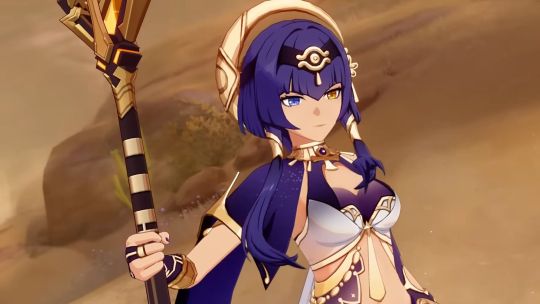
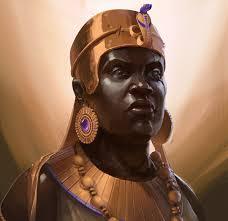
Cyno, another character from Sumeru, is dressed in garb that mimics depictions of Anubis, the ancient Egyptian God of funerary rites and protector of graves. As with Candace, his talents and abilities reference Egypt.
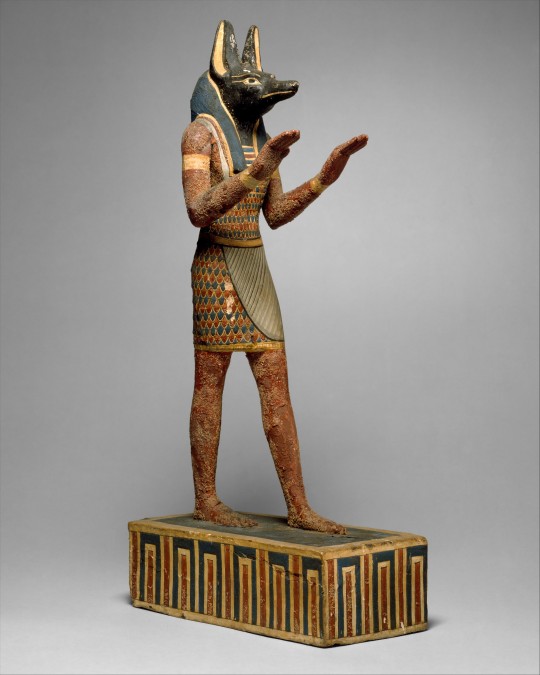

Even Sethos, a newcomer to the game and also a Sumeru character, has clothes, skills, and a name that alludes to either the Egyptian God Set, the god of the desert and storms, the Egyptian pantheon in general, or the Ancient Egyptian King Seti/Sethos.

These three characters are tanned, anyone can see that, but if you take a closer look you'll notice that they're all around the same shade. Considering all three of them take inspiration from real world Egyptian culture, it is insane to me that they're all a similar shade of the same slightly tanned tone. It is unacceptable that they're all a shade or two away from white when all of them has some aspect of Egyptian culture in their character.
To further shed light on Sumeru's racist sins, there exists a long standing conflict in Sumeru regarding The Eremites, a race of people descended from the ancient, now-collapsed civilization who primarily live in the desert. These people are the enemies in the game. You read that right. The desert dwellers are the enemies and not only that, but unlike the treasure hoarders who disappear into smoke when defeated, the Eremites collapse to the ground like the Fatui.
Why do the Treasure Hoarders, a band of pale skinned thieves, get away but the Eremites, treated as if their culture is lesser, presumably die?
Worse than that, there is a long quest in Sumeru where a white academic from Sumeru spends nearly the entire length of the quest insulting an Eremite. The quest I'm referring to, Golden Slumber, is a multi part quest that has the Traveler accompanying a researcher named Tirzad who is exploring the ruins in the deserts of Sumeru. Throughout the quest, Tirzad spends most of his time complaining and insulting Jeht and Jebrael, calling the latter an uneducated brute whenever Jebrael tries to do anything. And the Traveler is no help, with dialogue options remaining neutral instead of rightfully telling Tirzad to stop.
What we have here is a white man stereotyping a man of color and assuming things about himself and his race due to his own racist biases.
Many players have called out the racism in Tirzad’s actions and this quest overall, but Tirzad at multiple times fails to see the error of his ways and leads the group into life threatening situations simply because he can’t believe an “uneducated desert brute” could possibly know more than him.
I could sit here and pick apart more aspects of Sumeru and it's failures to properly represent the culture it's using, but I want to get into the inciting incident of this entire post, which is Natlan.
When the teaser for Natlan was released, it was just another failure on Hoyoverse's part. To understand why, we can break it down into parts, starting with the character leaks:
Mavuika, presumably the pyro archon, with a name inspired by Māori fire deity Mahuika.
Ororon, a mispelling of the Yoruba god Ọlọrun, the creator deity in the Yoruban pantheon.
Kinich, named after the Mayan god of the sun.
Iansan, another character whose name comes from the Yoruba pantheon.
Xilonen, this name coming from one of the aspects of the Aztec goddess of maize and the goddess of sustenance.
Kachina, name inspiration directly lifted from the religious beliefs of the indigenous Pueblos people.
Chasca, name coming from the Incan goddess of dawn and twilight.
Citlali, a name derived from Nahuatl, which is a language from ancient Mexico.
Are you seeing something interesting with these characters?
Hoyoverse has shoved multiple different cultures under one region and whitewashed every character. They did the bare bones work of lifting names and small design inspirations from so many different cultures and using them in the laziest way possible. If not pale white, the few characters who are tanned are a mere shade darker than Cyno and almost the same shade as Kaeya. There is nothing darker in sight with any of these characters.
Cultural representation matters. If Hoyoverse can explore the cultures of Germany (Mondstadt), China (Liyue), Japan (Inazuma), and France (Fontaine), it is insane that the same sort of love couldn't be given to both Sumeru and Natlan, both nations where we should rightfully be seeing more people of color.
(Side note, we should be seeing more people of color in the previous regions as well, even as NPCs. Bi-racial people exist all over the world, not just in America. Quick google searches will show what I mean.)
I can already hear the arguments against me.
"But Hoyoverse is an East Asian company! They don't need to/don't care about representation!"
Oh really? Because Lilithgames, the company behind Dislyte, is a company based in Shanghai, China. And when you compare the variety of skin tones of Dislyte to Genshin, you cannot make the argument that a company based in Asia doesn't care about diversity. Hoyoverse does not seem to care, but don't make it a blanket statement for all companies.
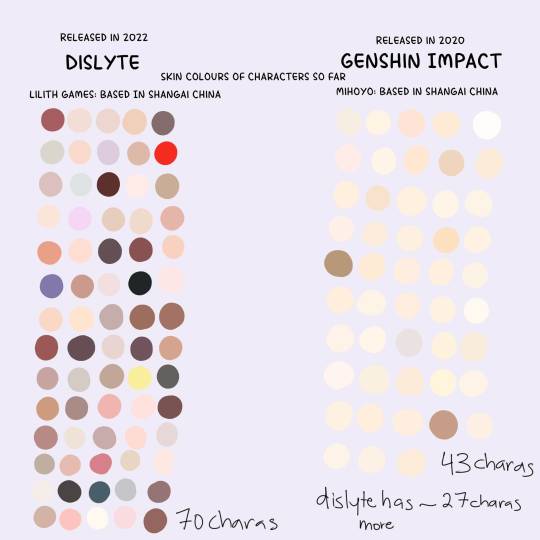
Still not convinced? Bluepoch, a small Chinese company behind Reverse:1999, is responsible for this character:

Smite, a game published by Hi-Rez Studios and Tencent Games (A Chinese publisher), has a character based on Olorun. And they did just fine in their depiction of him:
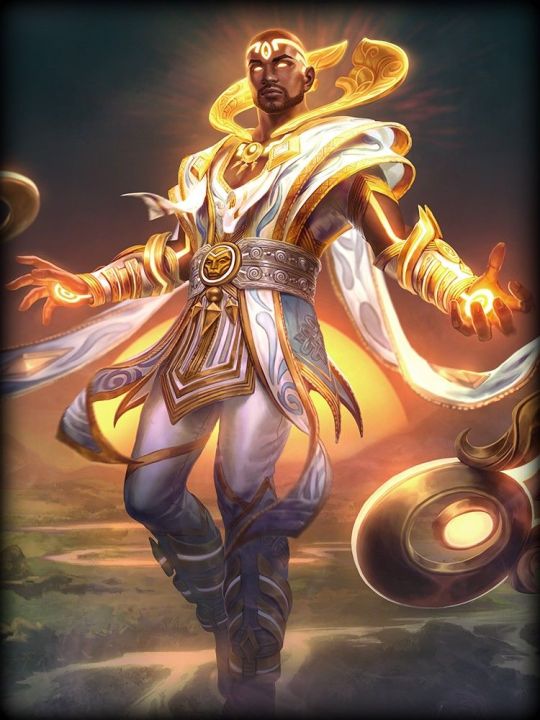
And the director behind Tekken 7, Katsuhiro Harad, shared concept art of an Arab fighter they want to add to the game. Why? Because he wanted to make sure he was respecting Middle Eastern culture and asked for feedback to see what can be improved. He posted this concept art and asked the community for input to make Shaheen as accurate as possible:
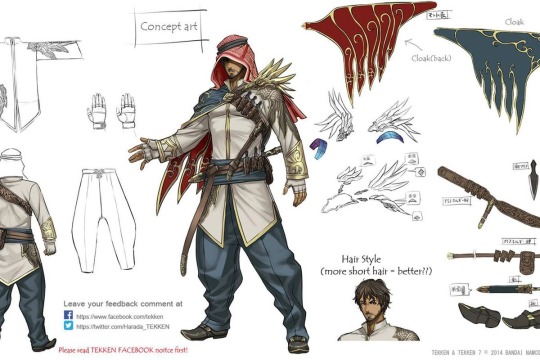
But sure. Asian companies don't care.
"It's a fantasy world! It doesn't have to 1-to-1 mimic the real world!"
Oh really? So why are characters named after real world cultural figures, why is the food based around real world food, why are outfits somewhat inspired by real world garbs then? If you're gonna draw inspiration from something and use the real world in your game, the world is a diverse place. It is not all white nor all slightly tanned.
"You can always stop playing the game."
I could, but that would mean letting them win and get away with their racism. It would mean letting Hoyoverse think this is the norm instead of the outlier. It would mean staying silent during injustice. I can do a lot of things, and exposing their issues is one of them.
"It could be difficult for them to implement dark-skinned characters."
It actually is not. Look at all the examples from other games and companies discussed previously. It's not hard. Plus, take a look at Wriothesley's concept art:
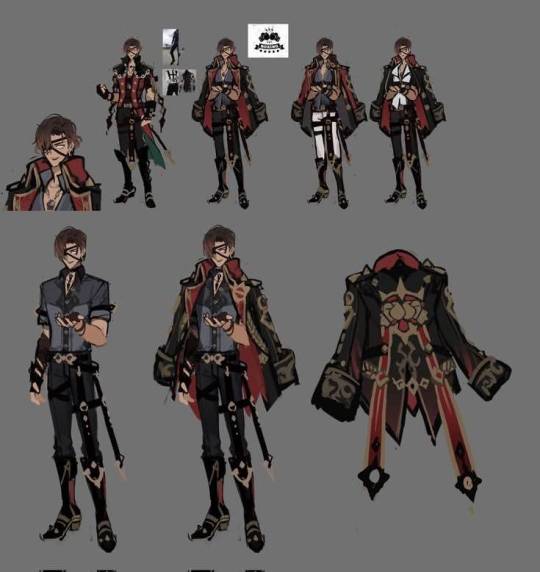
Originally, he had a different skin tone. So characters with different tones existed but got lightened and changed over time.
"I don't want [insert race here] in my fantasy game/it doesn't matter!"
Honey, you're just racist.
"Wow, I get it now. This is bad. What can I do to help?"
There are several ways:
Use Surveys and Feedback when you log into Hoyoverse games. This problem extends past Genshin, into HSR and ZZZ (a game whose ads promote itself with rap music and yet noticeably lack playable dark skinned characters so far). Use the platforms that they gave us in order to spread the word. Tell them that you're dissatisfied with the cultural appropriation and disappointed in Hoyoverse for taking certain cultures and whitewashing them. Email [email protected] if the feedback buttons aren't working for some reason.
Stop putting money into the game. A lot of companies listen when there's monetary loss involved. Show them that you mean business and stop supporting their business. You can also leave a one star and a review with your thoughts on their cultural appropriation.
Amplify the voices of those speaking out. There are plenty of posts out there better worded than mine that go in depth into a lot of these problems. Multiple voice actors of all ethnicities and backgrounds have spoken up about Hoyoverse’s injustices as well (many of the VAs from the game, including the voices of Albedo, Sucrose, Layla, Beidou, and even VAs for smaller NPCs have spoken out). When you see those posts, share them. Spread the word. Get those voices out there.
Shut down those silencing others. For as many posts out there trying to bring more light to this issue, there are others who try to shut us down. They continue to be racist and double down that nothing is wrong with Natlan. Do not let them get away with this. Show them this post or the myriad of other posts that exist. Tell them to shut the fuck up. Call them out. But don't let them silence anyone else.
If you've made it to the end and learned something, I'm glad. If you've made it to the end and want to further support me or anyone else in this fight, share this post and others like it.
Thank you for reading.
EDIT: As noted in this ask, the naming conventions of characters from other regions as opposed to Sumeru and Natlan. I’ll be adding a separate reblog to this post with a full list of naming conventions from each region.
582 notes
·
View notes
Text
Today's Indigenous character in Genshin Impact is
Gorou
As already posted previously, Watatsumi Island is an indigenous setting, therefore, Gorou, a native from Watatsumi, is also indigenous

8 notes
·
View notes
Text
Today's Indigenous character in Genshin Impact is
Sangonomiya Kokomi
As already posted previously, Watatsumi Island is an indigenous setting, therefore, Kokomi, a native from Watatsumi, is also indigenous

3 notes
·
View notes
Text
Today's Indigenous setting in Genshin Impact is
Watatsumi Island
The design and theme of the Island are based on the Ryukyuan religion, an indigenous belief system from the southwest of Japan.


4 notes
·
View notes
Text
Today's Indigenous setting in Genshin Impact is
Tsurumi Island
Tsurumi Island's Thunderbird Civilization (the one we see in the Through The Mists world quest series) takes inspiration from Ainu people.
Here's some additional interesting information


10 notes
·
View notes